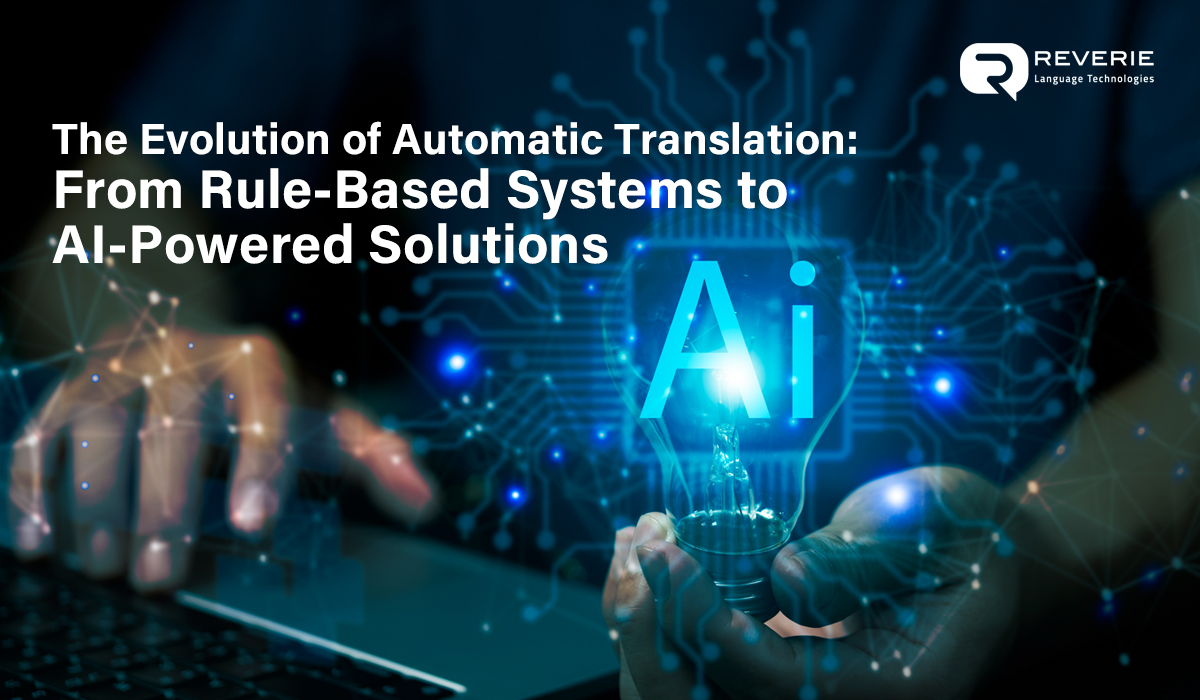As businesses grow internationally and friendships form across cultures, automatic translation is really shaking things up by breaking down those pesky language barriers. Have you ever thought about how far we’ve come in this journey? Let’s take a look back at the evolution of automatic translation—from those early rule-based systems to the amazing AI-powered solutions we have at our fingertips today!
What Is Automatic Translation, Anyway?
Automatic translation is the process of converting text or speech from one language to another using computer software. This technological advancement plays a crucial role in communication, facilitating interactions in business, travel, education, and beyond.
As e-commerce continues to flourish and intra-border collaborations increase, grasping the mechanics of automatic translation services becomes vital for anyone aiming to succeed in our interconnected world. This process not only involves translating content but often integrates proofreading, editing, SEO, and the re-uploading of translated material to ensure accuracy and relevance.
The Early Days: Rule-Based Systems
Remember when automatic translation was all about rule-based systems? These early tools relied on a strict set of linguistic rules to translate text. While they had their charm, their limitations quickly became clear. Rule-based systems often struggled with context, cultural nuances, and idioms, resulting in translations that sounded a bit stiff and robotic.
Still, these systems were pioneers in the translation world, laying the groundwork for the technological revolution to come. They showcased the potential of using tech to enhance communication and sparked a thirst for better solutions.
The Shift to Statistical and Neural Machine Translation
As the demand for more accurate and context-aware translations grew, so did the technology. Enter statistical machine translation (SMT), a breakthrough that shifted the game. SMT improved translation accuracy by analyzing heaps of bilingual text, but the real magic happened with the arrival of Neural Machine Translation (NMT).
NMT uses neural networks to understand and produce translations that feel more human. This revolutionary approach allows machines to grasp context and meaning, resulting in translations that flow naturally. Popular tools like Reverie’s NMT, Google Translate and Microsoft Translator have embraced NMT, making them more reliable and user-friendly than ever.
How AI is Changing the Game
Fast forward to today, and AI-powered solutions are leading the charge in automatic translation. With machine learning and deep learning technologies in their toolkit, these systems are getting smarter every day. They learn from user interactions and massive datasets, honing their translation skills like a seasoned pro. AI can now pick up on complex patterns and nuances, making it easier to communicate in multiple languages.
Imagine being able to chat with customers or partners in their native tongue, instantly building rapport and trust. With automatic language translators, this is no longer a fantasy—it’s a reality! Businesses can tap into advanced translation solutions to connect with diverse audiences, leading to stronger relationships and increased brand loyalty.
Automatic Translation of Websites:
One of the most significant developments in this field is the automatic translation of websites, using tools like Reverie’s Anuvadak. Imagine visiting a website and instantly being able to view it in your language of choice, enhancing the user experience and making content accessible to a multilingual audience. This capability is revolutionizing how businesses interact with customers online, breaking down barriers and expanding market reach like never before.
Challenges and Ethical Considerations
Of course, with great power comes great responsibility. While automatic translation has come a long way, challenges still linger. Ensuring accuracy and reliability is key, as mistranslations can lead to misunderstandings in both personal and professional interactions. Plus, we need to keep an eye on the ethical implications of AI, like bias and data privacy, to maintain trust in these technologies.
What’s Next for Automatic Translation?
Looking to the future, the potential for automatic translation is incredibly exciting. Think about real-time translation at conferences, voice recognition that captures every word you say, or augmented reality glasses that translate signs and menus right before your eyes. The possibilities are endless!
Unlocking the Power of Translation Tech
As we journey through this increasingly connected world, the importance of effective communication is clear. The evolution of automatic translation from rule-based systems to AI-powered solutions has empowered us to break down language barriers and foster understanding across cultures.
So, are you ready to leverage the magic of automatic translation for your business or personal life?
FAQs
What is automatic translation and how does it work?
Automatic translation is all about using computer software to convert text or speech from one language to another. It combines different methods, like rule-based systems and advanced AI algorithms, to provide quick and efficient translations. It takes the hassle out of language barriers!
What are the benefits of using an automatic language translator for businesses?
Great question! Using an automatic language translator can really help businesses connect with a global audience. It speeds up translations, boosts customer engagement, and makes your content accessible in multiple languages. This means you can reach more people and grow your market presence!
How does automatic translation of websites improve user experience?
Automatic translation of websites is a game changer! It lets visitors see content in their preferred language instantly. This kind of accessibility not only enhances the overall user experience but also increases engagement and conversion rates. It’s a fantastic way for businesses to connect with a diverse audience effortlessly!
What types of automatic translation services are available?
There’s a whole range of automatic translation services out there! From machine translation tools to website localization services and real-time translation applications, these solutions cater to various needs. Whether you’re looking to translate documents or facilitate smooth customer interactions, there’s something for everyone!
Are automatic translation services reliable and accurate?
While automatic translation services have come a long way thanks to AI and machine learning, they can still run into challenges with nuances and idiomatic expressions. It’s a good idea to double-check translations for accuracy, especially in professional settings, to make sure your message is crystal clear.


